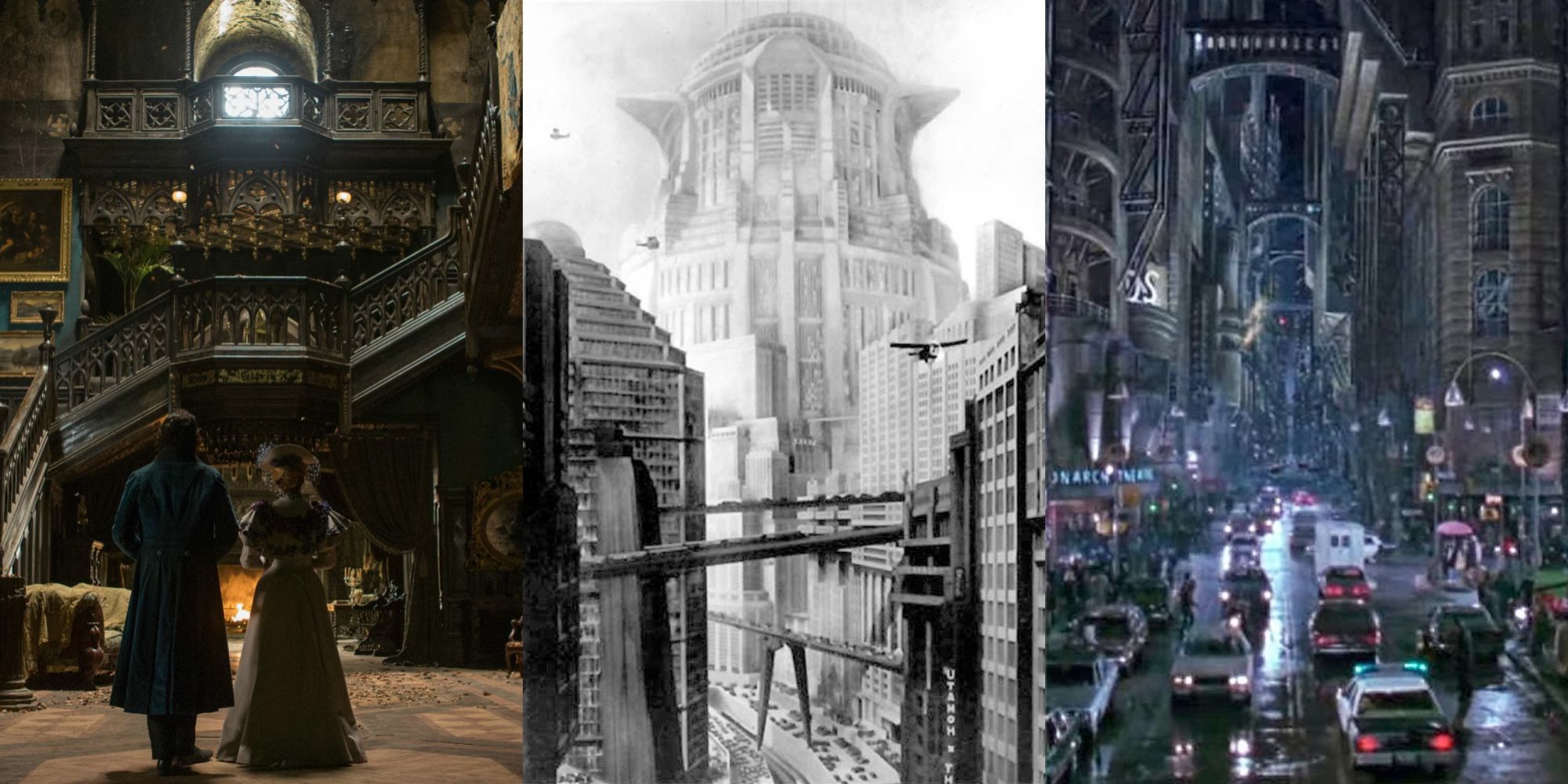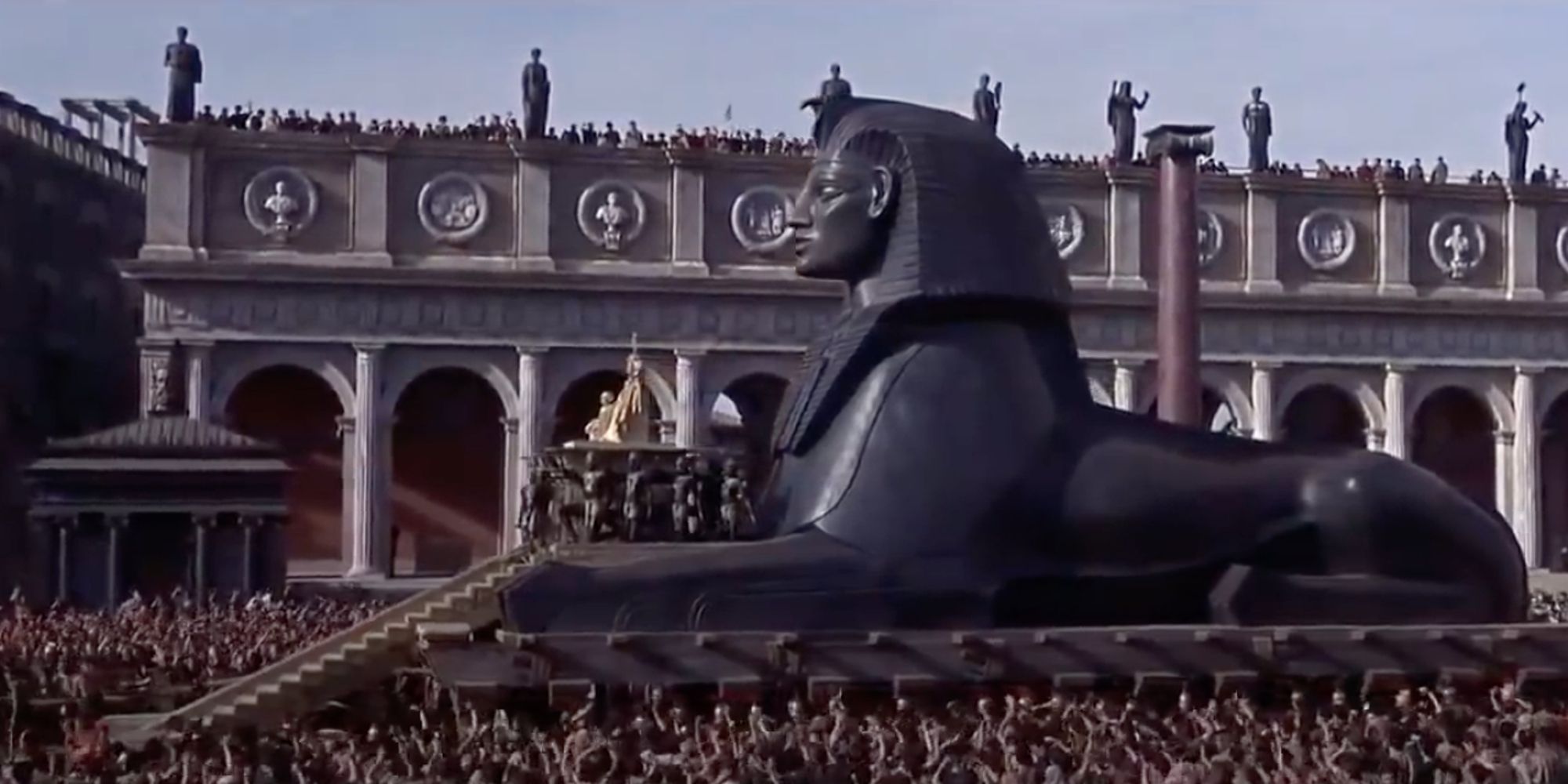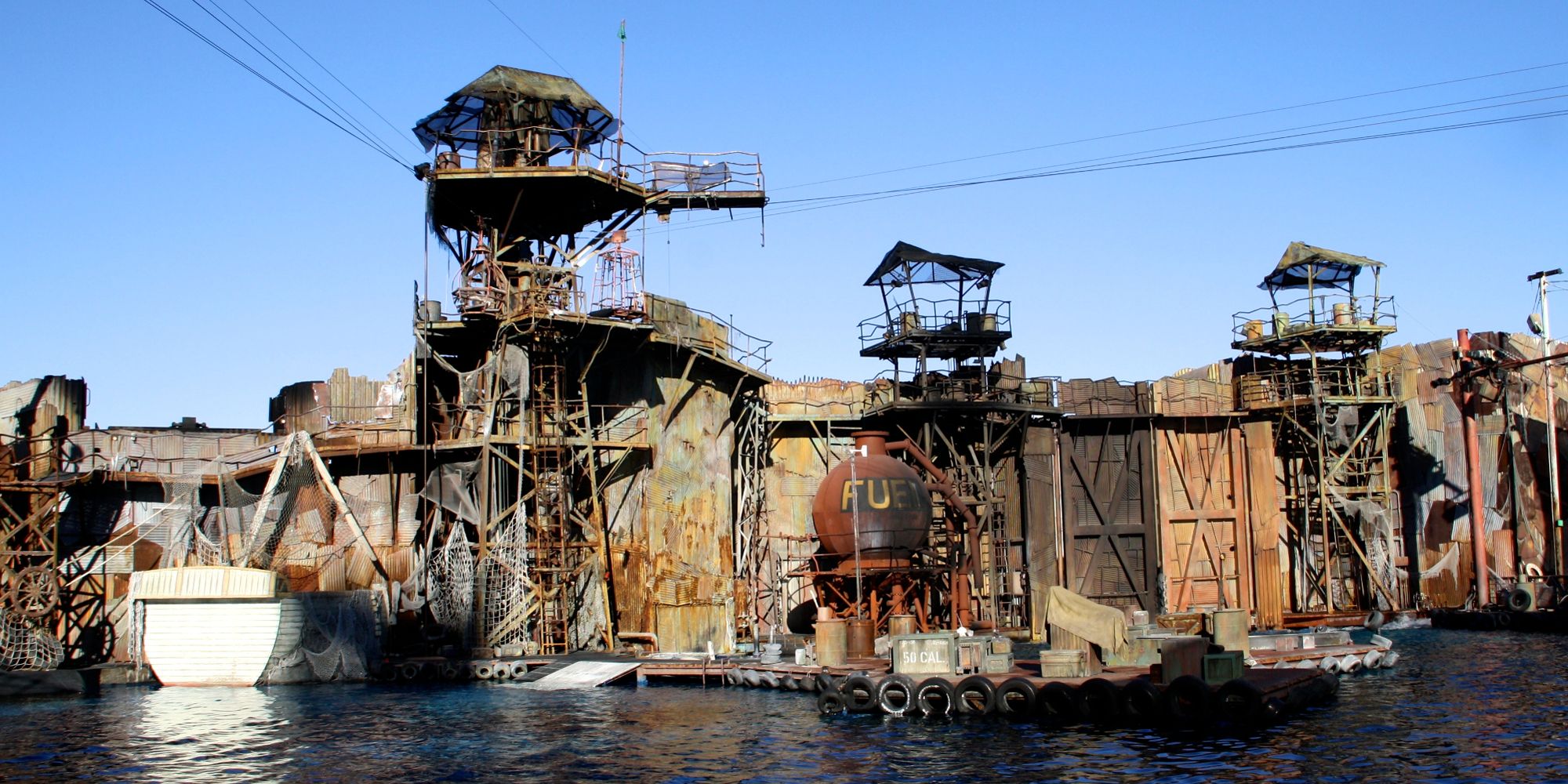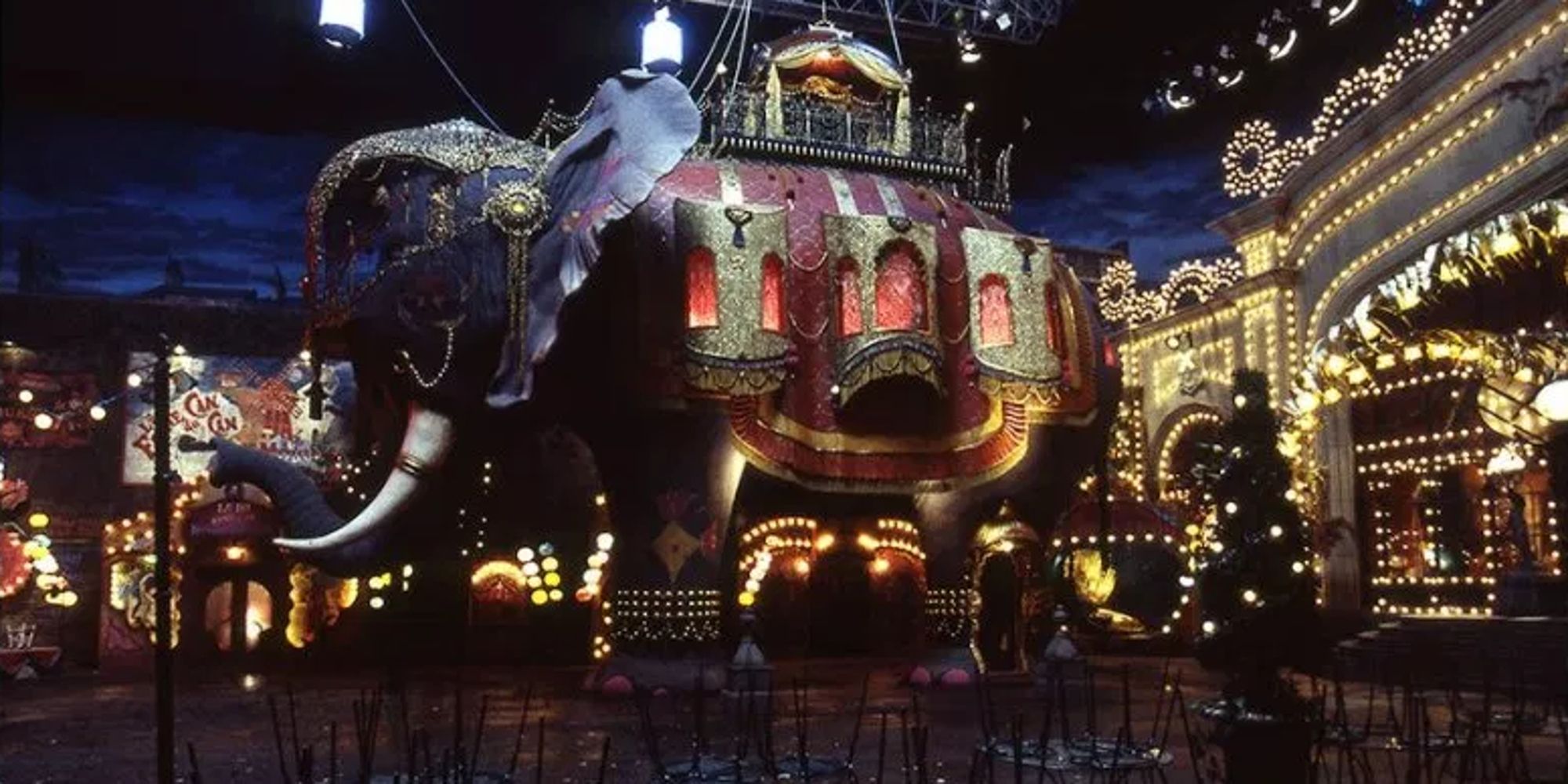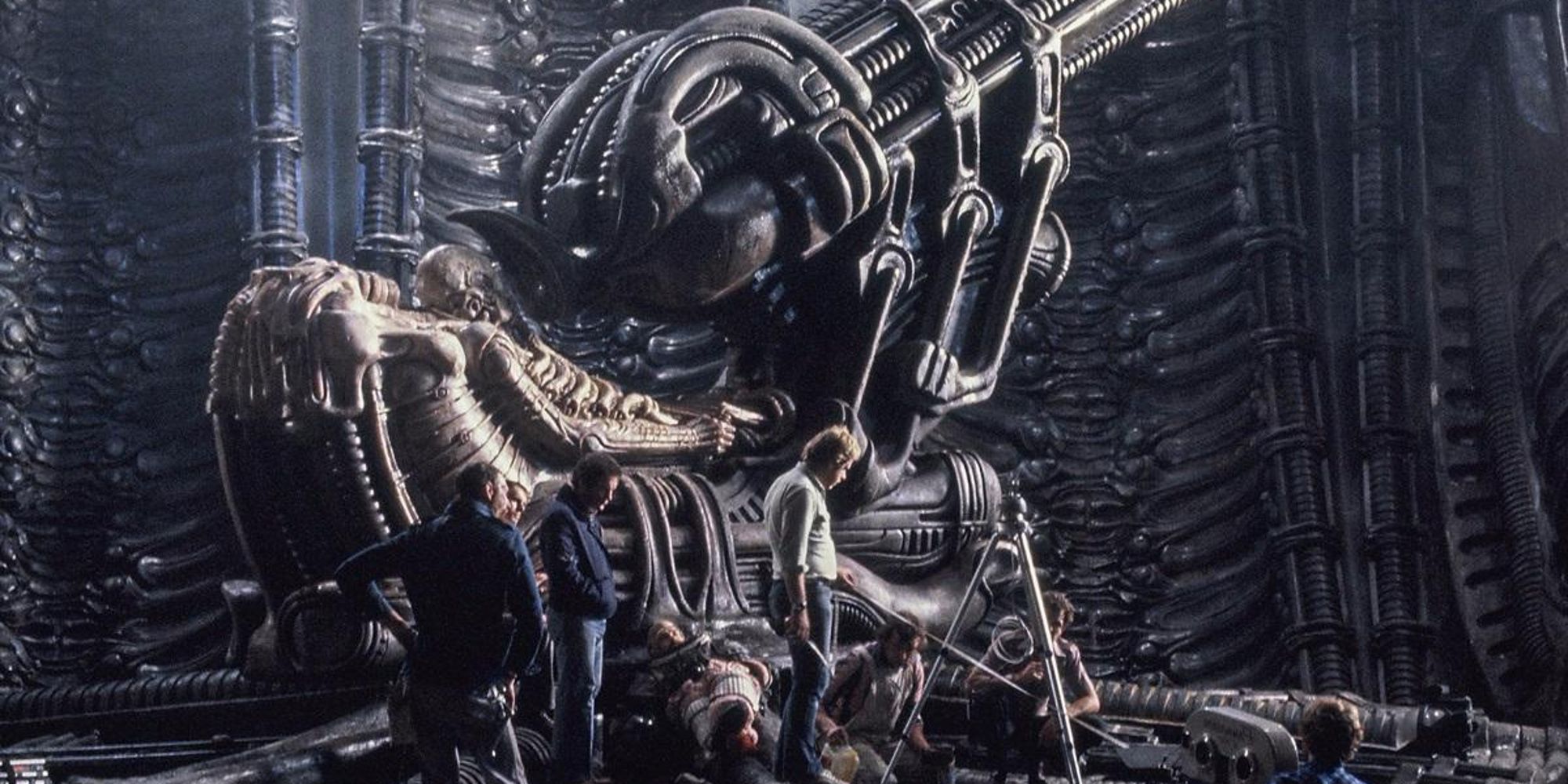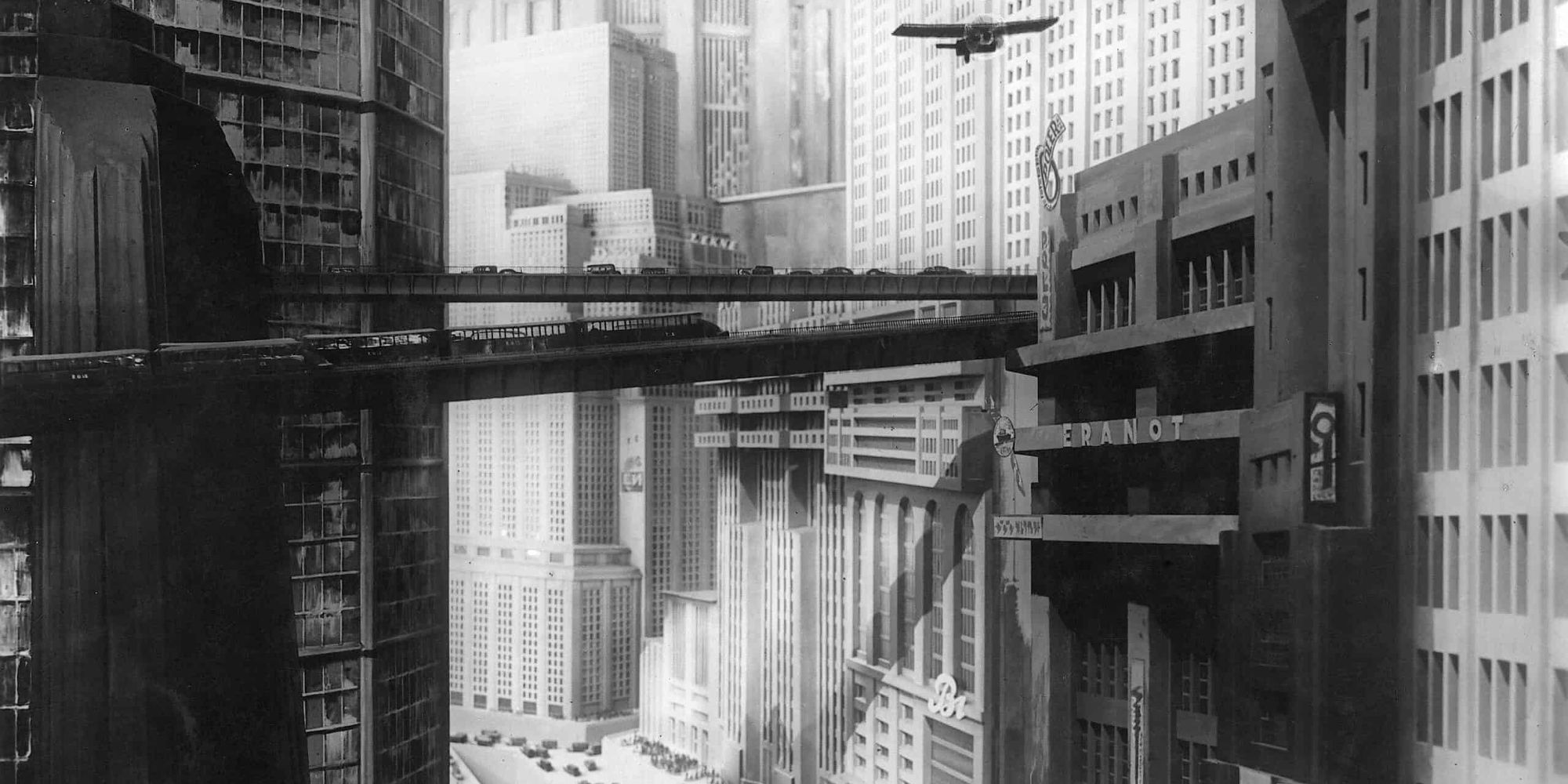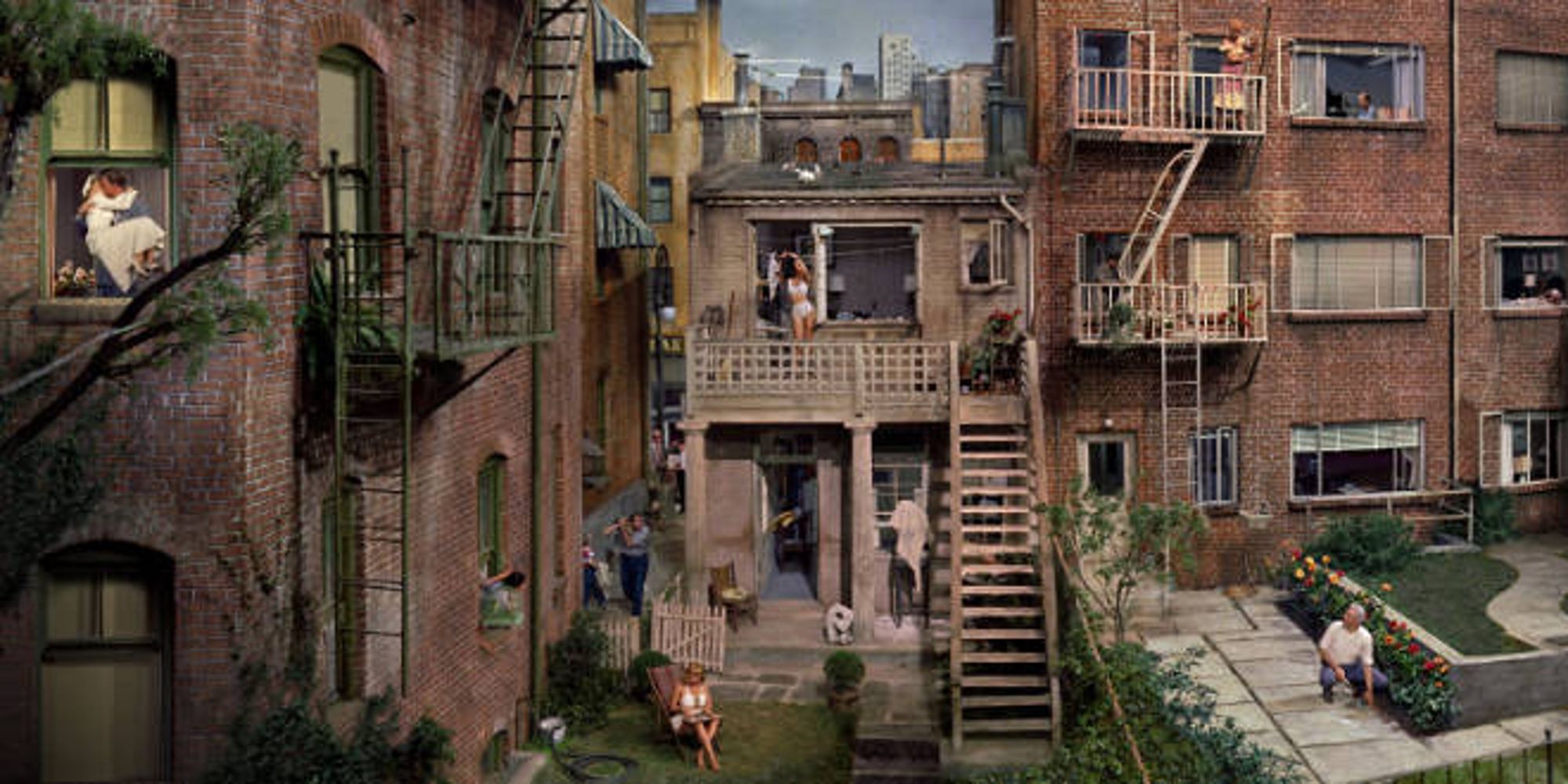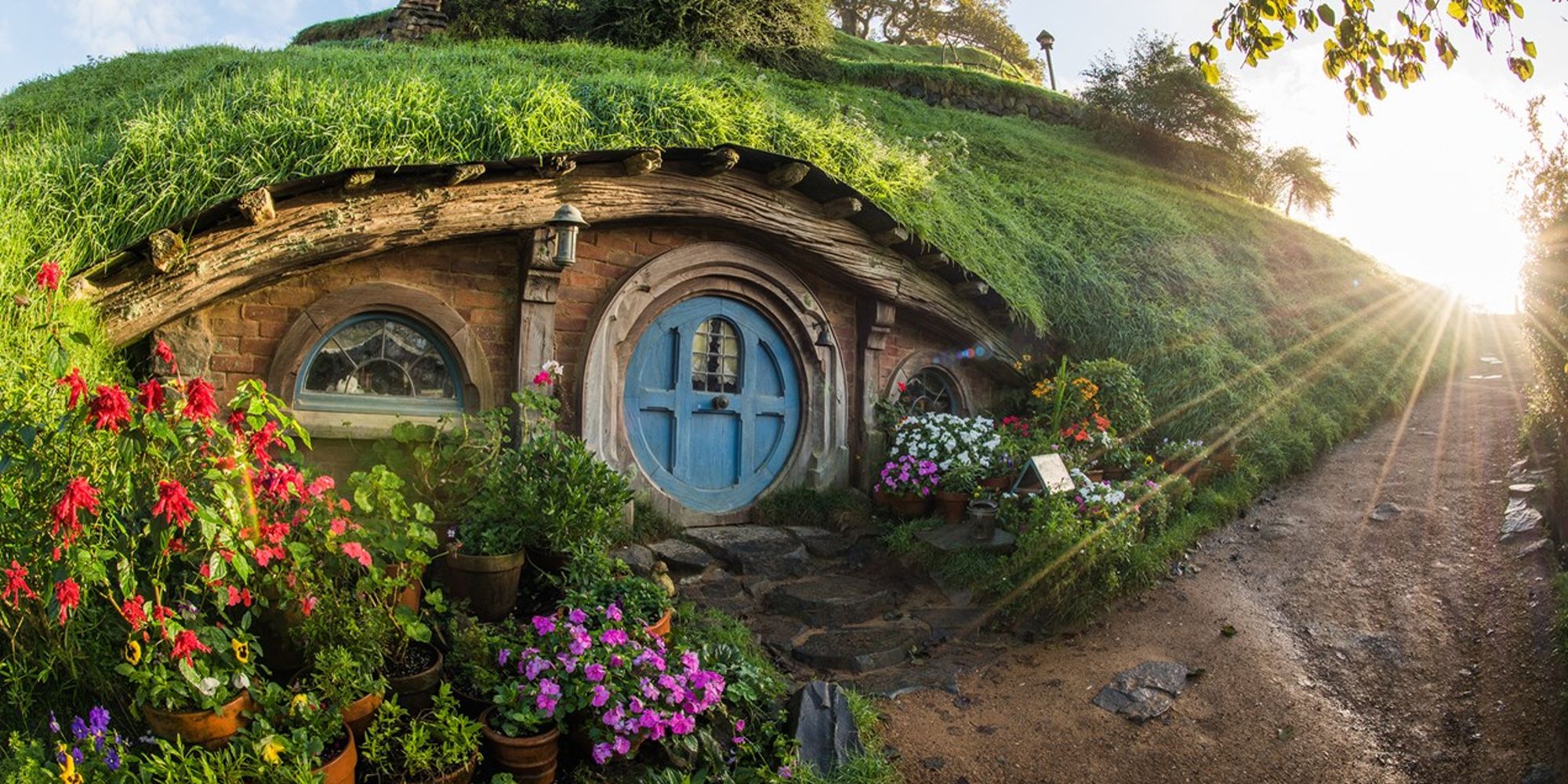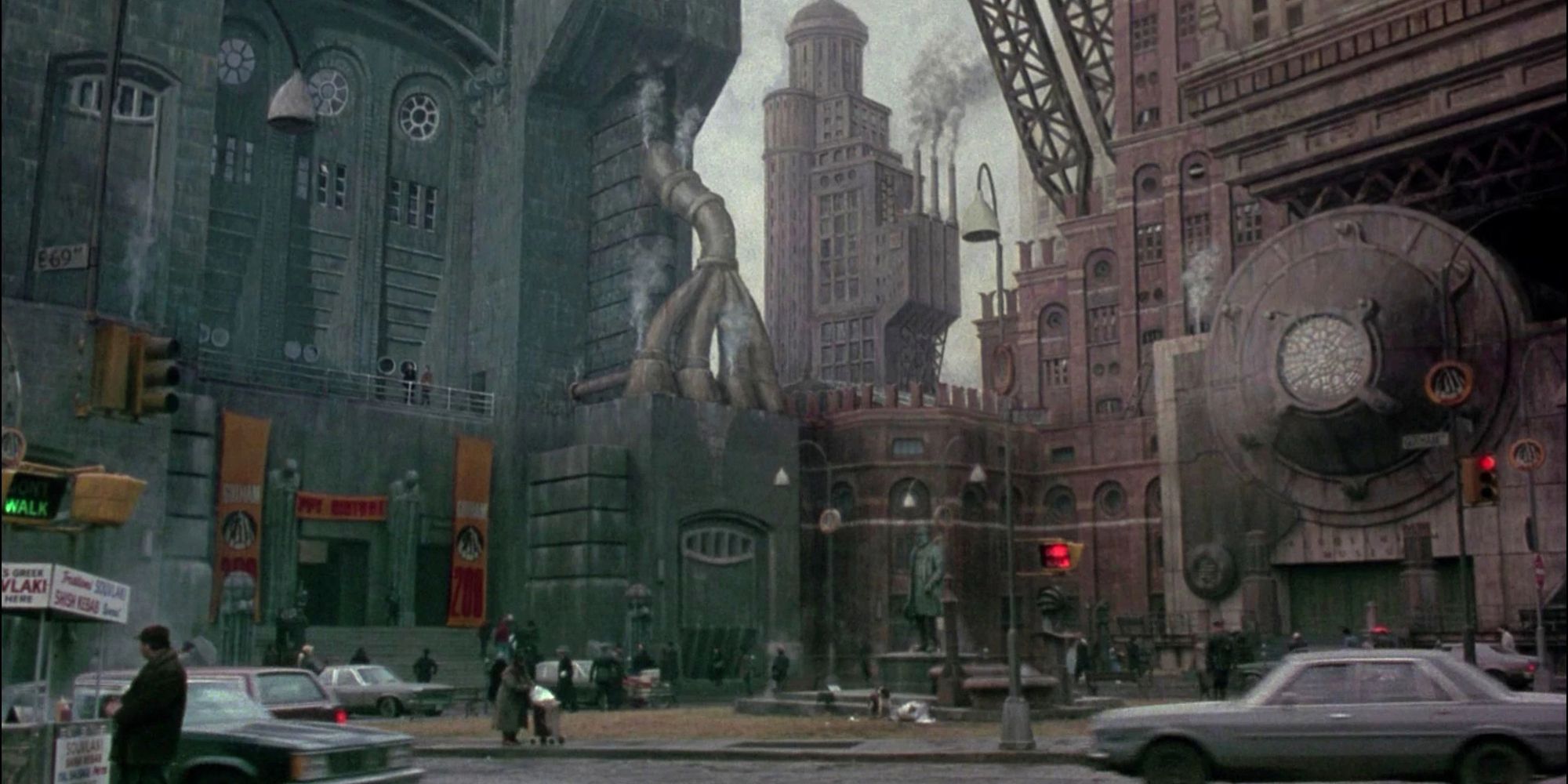Thanks to an ever-evolving growth in green-screen and CGI technology, movies have been gifted the ability to take place nearly anywhere. From historical times to far-away planets, almost anything is possible when it comes to film locales.
While this technology has its perks, filmmakers had previously been forced to rely on creating their locations from scratch for years, and many continue to do so to this day. The following are some of the best examples of exotic and extravagant settings built solely for a film’s production.
‘The Abyss’ (1989)
In James Cameron’s under-appreciated sci-fi epic, engineers and estranged married couple Lindsey (Mary Elizabeth Mastrantonio) and Bud (Ed Harris) are enlisted to investigate an unidentified underwater object. Operating out of the “Deep Core,” an underwater platform designed by Lindsey, they soon discover there is more to the mystery than they could ever imagine.
Known for his obsession with all things aquatic, it’s no surprise that Cameron had a massive fresh-water tank built for The Abyss, where most of the film was shot underwater. The tank was 55 feet deep and contained over 7 million gallons of water, which, at the time, was the largest of its kind.
‘Crimson Peak’ (2015)
Gullermo del Toro’s gothic romance follows Edith Cushing (Mia Wasikowska), an up-and-coming American author who falls in love with Sir Thomas Sharpe (Tom Hiddleston). However, when she arrives at his remote mansion outside England, she quickly grows suspicious of Thomas and his sister Lucille (Jessica Chastain). With the help of ghostly premonitions, she must uncover the mysteries of the Sharpes and their haunting home before it is too late.
A somewhat polarizing entry in del Toro’s filmography, most filmgoers agree that Crimson Peak is a gorgeous piece of filmmaking. A large part of that reputation is due to the massive early 20th-century manor built with immaculate attention to detail. Del Toro felt the manor needed to mirror the macabre nature of the story. From the sprawling hallways to the towering foyer, it remains an eerily looming presence felt throughout the film.
‘Cleopatra’ (1963)
Cleopatra is the epic tale of a queen (Elizabeth Taylor) attempting to preserve the legacy of the Egyptian empire. Unfortunately, she finds herself caught between Julius Caesar (Rex Harrison) and Marc Antony (Richard Burton) along the way.
Infamous for its myriad of production issues, the film was still a hit, although it initially lost money due to its massive budget for the time. Much of that is thanks to the wildly elaborate set design, including a sequence where Cleopatra rides into the Roman Forum on a throne embedded in a Sphinx statue. It remains a jaw-dropping sight to this day, a colossal symbol of glorious Hollywood excess.
‘Waterworld’ (1995)
After the polar ice caps melt, Earth becomes almost entirely submerged in water. One of the dwindling number of humans remaining, The Mariner (Kevin Costner), comes across a young girl who could be the key to finding dry land. The Mariner must defend her when a ruthless gang of pirates learns of her existence.
Production for Waterworld was notoriously riddled with issues, including multiple sets being destroyed mid-production. The sets that made it into the film, however, were spectacular. The most notable of these is the Atoll, a massive floating city complete with operating doors and mechanics built off the coast of Hawaii. While the film itself is somewhat of a mixed bag, watching this incredible behemoth of a set in action makes it more than worth the watch.
‘Moulin Rouge!’ (2001)
Young poet Christian (Ewan McGregor) travels to Paris in 1899 to begin a Bohemian lifestyle. However, his world turns upside down when he meets Satine (Nicole Kidman), a singer who mistakes him for the Duke (Richard Roxburgh), at a lively theater known as the Moulin Rouge. When the Duke finds out, he is furious, and Satine and Christian’s love story becomes more complicated.
Baz Luhrmann’s explosive Bollywood-inspired musical isn’t for everyone and can only be described as the embodiment of “sensory overload.” This carries over into the lavish and gaudy set design. A pivotal moment involves a duet atop an elephant statue that was built to scale. Of course, that’s not all, as the elephant comes complete with a heart-shaped room in the center.
‘Alien’ (1979)
Deep in outer space, a ship’s crew is awakened from cryo-sleep to investigate an alien vessel. On the vessel, they discover bizarre alien technology, but they soon learn that the darkest discovery climbed aboard their ship, now living among them.
Ridley Scott’s game-changing sci-fi horror masterpiece gave us some of the most iconic imagery in the genre. The most prominent example, of course, is the terrifying Xenomorph, but a close second is a bizarre alien relic, referred to as the “space jockey.” The mysteries behind this haunting lifeless mass wouldn’t be fully explored until Scott’s Prometheus and Alien: Covenant decades later, but H.R. Giger‘s design has nonetheless buried itself in the minds of thousands of fans for decades.
‘Metropolis’ (1927)
In a futuristic utopia, a young boy finds a section of the town below the rest, where workers have been inhumanely forced to live. When he enlists the help of a teacher, his father, a figure of authority, soon discovers his plan to free the workers, creating a larger societal divide.
Fritz Lang’s revolutionary silent sci-fi epic is considered one of the era’s greats. It’s most well-known for its elaborate sets, built primarily as miniatures. An intricate technique using mirrors was utilized to make the sets appear as though they were of equal scale with the actors. The hard work paid off, creating one of film’s most iconic sci-fi cityscapes.
‘Rear Window’ (1954)
Photographer Jeff (James Stewart) finds himself wheelchair-bound and stuck in his apartment after an accident. He gazes out his window at the many locals going about their days to pass the time. However, his new pastime takes a dark turn when he witnesses what appears to be a murder.
Alfred Hitchcock’s beloved thriller may have taken place in a single location, but the master of suspense wasn’t any less meticulous than usual when conceiving the film’s detailed setting. The entire neighborhood was built from scratch in a soundstage, containing 31 individual apartments, each with a unique design. The giant replica had so many moving parts you’d be forgiven for mistaking it for a real neighborhood.
‘The Lord of the Rings: The Fellowship of the Ring’ (2001)
When evil emerges and threatens to destroy all that is good, young hobbit Frodo Baggins (Elijah Wood) is forced to embark on a perilous journey to stop it. With the help of a fellowship of warriors, he must travel to Mount Doom to destroy a mystical ring, putting an end to the mighty Lord Sauron and his reign of terror.
Peter Jackson blew the world away with his lived-in take on Middle-Earth, pulled straight from the pages of J.R.R. Tolkien‘s beloved trilogy. Fans knew they were in good hands when they first saw the meticulously detailed set of Frodo’s home, Hobbiton, with “Hobbit-holes” built into the hills of the gorgeous New Zealand countryside. Few fantasy films have created a more iconic introduction to a world than Howard Shore‘s delightful score playing over long shots of this beautifully crafted town.
‘Batman’ (1989)
After his parents are killed in an alley by a local criminal, Bruce Wayne (Michael Keaton) vows to protect his native city of Gotham as the masked vigilante known as Batman. Years later, a new criminal called the Joker (Jack Nicholson) arrives on the scene, putting Gotham City in danger, the likes of which it has never seen.
Tim Burton’s Batman exploded into the mainstream, creating millions of new Batman fans. It certainly helped that his vision of Gotham was a bold and creative one. An entire section of the city was built on a lot solely for the film, inspired by a blend of Art Deco and French Gothic stylings. The look was simultaneously vintage and timeless and would go on to inform the aesthetic of the beloved Batman: The Animated Series.
























































![Key Metrics for Social Media Marketing [Infographic] Key Metrics for Social Media Marketing [Infographic]](https://www.socialmediatoday.com/imgproxy/nP1lliSbrTbUmhFV6RdAz9qJZFvsstq3IG6orLUMMls/g:ce/rs:fit:770:435/bG9jYWw6Ly8vZGl2ZWltYWdlL3NvY2lhbF9tZWRpYV9yb2lfaW5vZ3JhcGhpYzIucG5n.webp)


